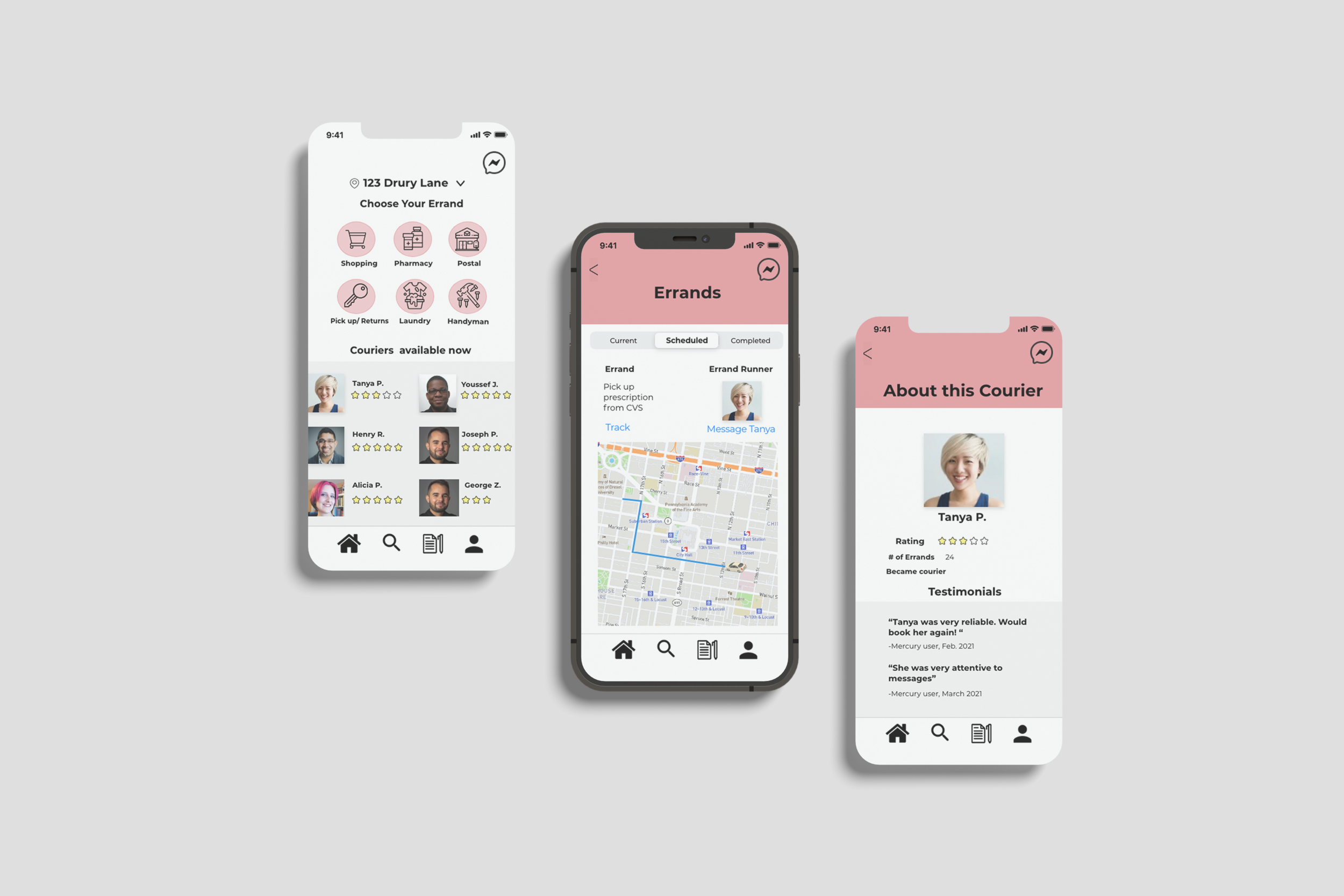
Mercury: Courier App for Anyone
Here’s how it started
My Role
Project Manager, UX Researcher and UX Designer
Early Ideas
As an inner-city Philadelphian with no car, it’s hard to be in two places at once. It had me wishing I could have a personal assistant if even for a day
Goal
See what potential users would want in a courier/errand running app if at all, and create it.
Timeline- 10 weeks
4 weeks: Research, data analytics and competitive analysis
4 weeks: Low-fidelity, mid-fidelity and high-fidelity designs. Create clickable prototype
1 week: Usability testing
Jumping Right into Research
Design Methodology and Recruitment Strategy
-Because I was making Mercury from scratch, the research would shape the initial design of Mercury.
-I chose to survey and interview participants as this was exploratory research.
-I recruited participants via various social media outlets.
Survey and Interview Specs
-Survey was 12 questions, multiple choice with two short answer and was administered through Qualtrics.
-Interview was 8 questions, 20-30 minutes long and was administered via Zoom and transcribed also with Zoom.
Initial Insights
From the word clouds, I gathered that there was definitely interest in an app like Mercury.
It also served as a jumping off point for any initial designs as Mercury was being created from scratch.
These also helped gauged what aspects of Mercury were most important to them: cost, trustworthiness, and reliability being key components, which would impact the overall design.
Survey Question: If an app like this were to exist, what would your main concerns be ?
Survey Question: Can you think of similar apps?
Further Insights
Again, there was some significant interest in using an app like Mercury that was described in the hypothetical scenario questions regarding errands. Additionally, from the survey and interview data, I identified three similar competitors of Mercury: BHS, UberEats and Task Rabbit. These were both direct and in-direct competitors.
From the data, I developed a heuristic analysis against the three direct competitors. Using the Nielsen Norman Group Heuristics, Apple’s Human Computer Guidelines and survey data I cross analyzed each on these criteria: Product Goal, User Control and Freedom, Clarity, Aesthetic, Cost per Service and Flexibility and Efficiency of Use.
Low Fidelity Sketching
Mid Fidelity Prototypes
High Fidelity Prototypes
Usability Testing












